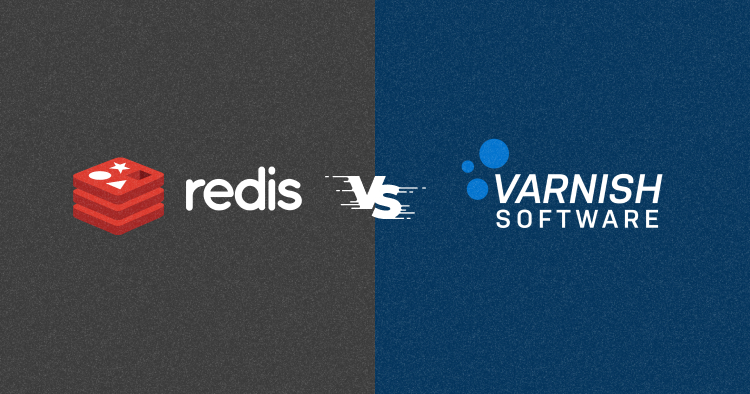
When it comes to optimizing WordPress performance, the choice between ‘Varnish vs Redis’ is a critical decision. Varnish and Redis are both valuable caching solutions employed in WordPress, each serving distinct purposes within the platform
Varnish accelerates website loading by caching and serving static content, while Redis optimizes data storage and retrieval, enhancing overall performance.
In this blog, we’ll explore the roles of Varnish and Redis in optimizing WordPress performance and help you decide whether to choose one, both, or a combination of these caching solutions for your WordPress site.
What Is Redis?
Redis is an open-source memory object caching system used by websites to accelerate page load times. It caches frequently accessed data, including API call results and database queries, in RAM. Redis is often chosen over Memcached for its exceptional performance, speed, and user-friendly nature.
Integrating Redis caching into your WordPress site can significantly enhance its performance and reduce page load times.
What Is Varnish?
Varnish is a high-performance HTTP accelerator, functioning as a caching HTTP reverse proxy or web application accelerator. It’s installed in front of HTTP-speaking servers and is configured to cache content.
Varnish Cache is renowned for its exceptional speed, often boosting content delivery by a factor of 300 to 1000 times, depending on your server architecture.
Optimize WordPress with Redis and Varnish Cache
Supercharge your WordPress site with Cloudways. Harness Redis and Varnish Cache for lightning-fast performance, automatic updates, and expert support.
Should I Choose Redis or Varnish Cache?
Redis and Varnish are both open-source tools. Currently, Redis has a significant following with approximately 37.4K GitHub stars and 14.4K forks on GitHub, while Varnish has a smaller presence with around 908 GitHub stars and 216 GitHub forks.
According to the StackShare community, Redis enjoys broader popularity, being mentioned in over 3,000 company stacks and nearly 1,800 developer stacks. In comparison, Varnish is listed in around 1,000 company stacks and 140 developer stacks.
Typically, Redis and Varnish are best deployed on separate servers rather than sharing resources with web servers and databases. They should be configured to use your server’s Private Network IP. When used together, they can offer exceptional performance.
Cloudways utilizes both Redis and Varnish in conjunction to achieve unmatched performance. Not many hosting providers are known to leverage both, which makes Cloudways managed WordPress hosting service unique.
When deciding which one to opt for, I would recommend choosing both, as this will likely lead to significantly improved performance compared to selecting only one.
Pros & Cons of Redis
| Pros | Cons |
| High-speed caching | Limited storage capacity (512 MB) for key-value pairs |
| Simple and easy installation | Data retrieval from different instances can be challenging |
| Supports various data structures | It may not be suitable for extensive data storage |
| Advanced caching capabilities | Limited capability for handling large amounts of data |
| Uses an efficient Redis Hashing algorithm | May not excel in scenarios requiring extensive data storage |
| Scalable without causing downtime | |
| Open source and known for stability |
Pros & Cons of Varnish
| Pros | Cons |
| High-performance HTTP accelerator | Requires a more complex configuration |
| Functions as a caching HTTP reverse proxy | Primarily focuses on caching HTTP content |
| Exceptional speed (boosts content delivery) | It may not be as versatile in handling various data types |
| Enhances web server performance | Users may require additional expertise for configuration and fine-tuning |
| Reduces load on backend servers | |
| Open source and actively maintained |
How Cloudways Uses Redis and Varnish?
As we mentioned earlier, Cloudways uses both Redis and Varnish. Let’s see how.
How Cloudways Uses Redis?
All Cloudways servers come with Memcached as the default object cache. However, WordPress Redis offers a more sophisticated and comprehensive implementation that encompasses all the functionalities of Memcached while introducing additional features.
Redis, or Remote Dictionary Server, serves as an in-memory, persistent, key-value database recognized as a data structure server.
What sets Redis apart from similar servers is its capability to store and manipulate high-level data types, such as lists, maps, sets, and sorted sets.
How to Manage Redis?
- Access your Cloudways Platform using your login credentials.
- Navigate to the top menu bar and select Servers.
- Choose the specific server you want to manage.
- Within Server Management, click on Manage Services.
- Toggle the status of Redis by selecting Enable to activate the service. Conversely, you can deactivate Redis by choosing Disable.
How Cloudways Uses Varnish?
Cloudways servers are shipped with Varnish pre-installed, so you and your website visitors enjoy faster load times and a premium user experience.
Cloudways servers come with Varnish pre-installed, ensuring that you and your website visitors experience faster load times and a premium user experience.
How to Manage Varnish?
By default, Varnish is enabled on all Cloudways servers. Enabling Varnish on the server activates Varnish caching for all applications hosted on that server.
Conversely, disabling Varnish on the server deactivates Varnish caching for all applications hosted on that server.
You can follow the same steps to Enable and Disable Varnish as I defined above.
Benchmarking Server With and Without Varnish and Redis by ApacheBench
ApacheBench is a pre-installed tool on the Cloudways server. ab is a utility tool used for benchmarking Apache Hypertext Transfer Protocol (HTTP) servers. Its primary purpose is to provide insights into the performance of your existing Apache installation.
Specifically, ab offers information on the number of requests per second that your Apache server can handle, offering a valuable impression of its overall performance.
Several crucial points must be taken into account when interpreting Apache Bench results. These considerations are essential for shaping an effective strategy to identify and eliminate bottlenecks in our application, thereby enhancing its overall performance.
Firstly, we need to pay attention to the Requests Per Second metric. This metric indicates the effectiveness of our web server setup, with a higher number indicating better performance.
Additionally, the Connection Times (in milliseconds) and the Percentage of requests served are vital metrics to analyze. Adjusting the settings of your web server may be necessary to achieve the desired performance levels reflected in these metrics. Fine-tuning these parameters can be a key aspect of optimizing your application’s performance.
Note: Varnish and Redis are both installed and Enabled on the server. Now, I’ll run the below command on the SSH terminal of the same server.
ab -n 10000 -c 100 http://wordpress-1101925-4014864.cloudwaysapps.com/
This command simulates 10,000 requests using ApacheBench, with a concurrency setting of 100 requests. This implies that ApacheBench will dispatch a total of 10,000 requests in batches of 100 simultaneously.
Here you can see the Requests per second are 6955.75
Let’s Disable the Varnish and Redis on the server, test it again on ApacheBench, and see the results. I have tested the results 5 times for each and calculated the average. You can see the results below.
As you can see, the number of Requests per second generates more with Varnish and Redis, and the Time per request is almost the same.
Supercharge Your Site with Cloudways Varnish Hosting
Experience high-performance, Varnish-optimized cloud hosting with 24/7 support, free migration, and top-notch security. Speed up your site’s content delivery today!
Conclusion
In summary, when it comes to enhancing WordPress website performance, the choice between Varnish vs Redis is pivotal.
Redis excels at versatile data storage, while Varnish accelerates web content delivery—two critical components for optimizing WordPress site speed and delivering an exceptional user experience.
Cloudways WordPress hosting stands out by providing a unique technology stack that uses Redis and Varnish in conjunction. This integrated approach is designed to significantly boost your WordPress website’s performance, resulting in faster load times and an enhanced user experience.
Q1. Is Redis better than Varnish?
Redis and Varnish serve different purposes. Redis is an in-memory data store, while Varnish is a web cache. The choice depends on your specific needs. If you need versatile data storage and retrieval, Redis is better. If you want to accelerate web content delivery, Varnish is more suitable.
Q2. How long does Varnish Cache last?
Caching is automatically activated with a default expiration period of 120 seconds for all requests. You can manage the caching duration for specific objects or decide not to cache them at all.
Q3. What is Varnish in Microservices?
In a microservices architecture, Varnish can act as an HTTP accelerator or reverse proxy, sitting in front of microservices to cache content, enhance performance, and reduce the load on backend services. It improves the overall efficiency of microservices-based systems.
Q4. When should you not use Redis?
Redis may not be suitable for very large datasets due to its limited storage capacity. If your application requires extensive data storage and you cannot partition the data, Redis may not be the best choice. Additionally, if you don’t need advanced caching capabilities, simpler solutions may suffice.
Q5. Which is better than Redis cache?
The choice depends on your specific needs. Memcached is a popular alternative for simple key-value caching. For more complex data storage and retrieval, alternatives like Apache Kafka or Apache Cassandra may be considered. The best choice depends on the specific requirements of your application.
Abdul Rehman
Abdul is a tech-savvy, coffee-fueled, and creatively driven marketer who loves keeping up with the latest software updates and tech gadgets. He's also a skilled technical writer who can explain complex concepts simply for a broad audience. Abdul enjoys sharing his knowledge of the Cloud industry through user manuals, documentation, and blog posts.


